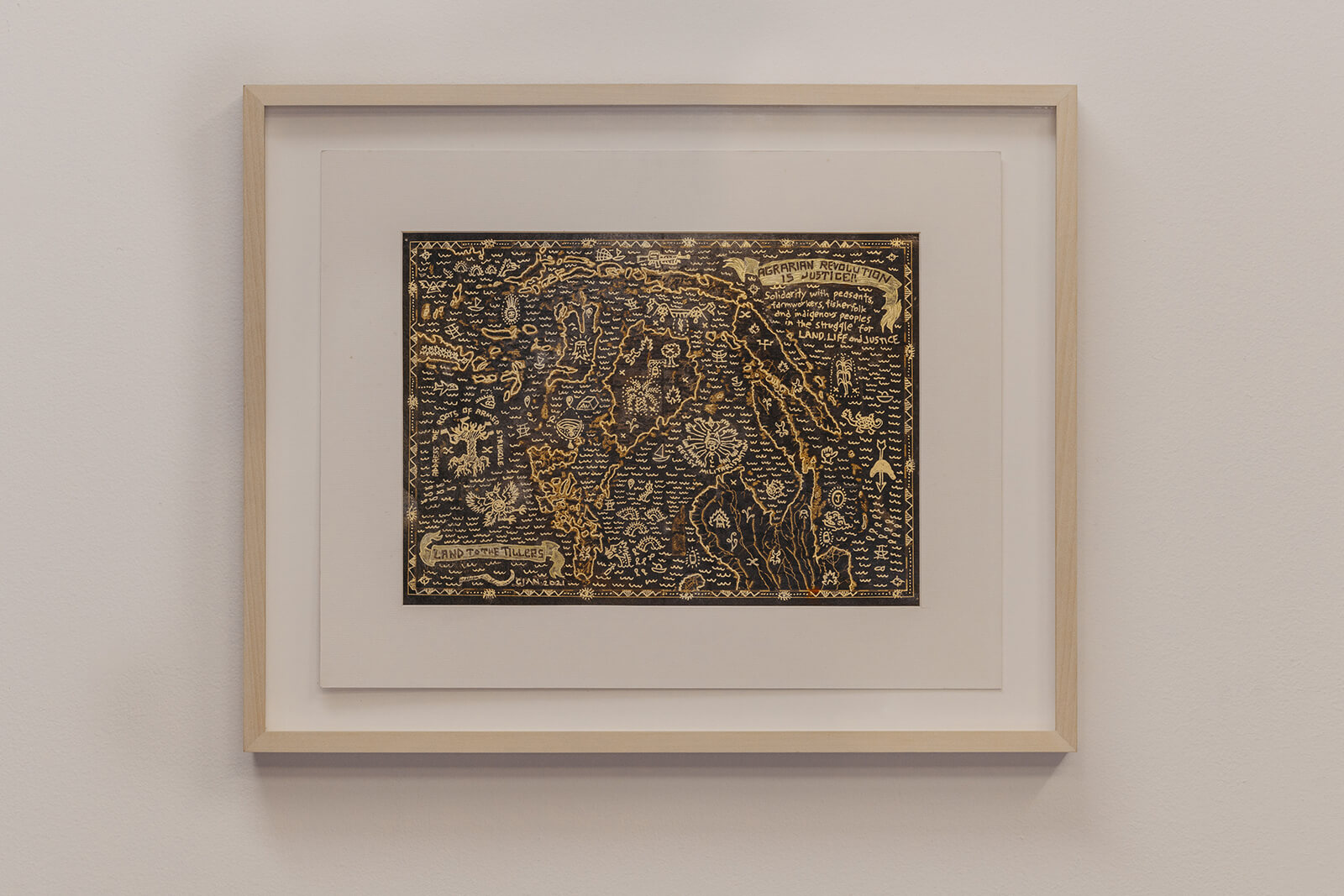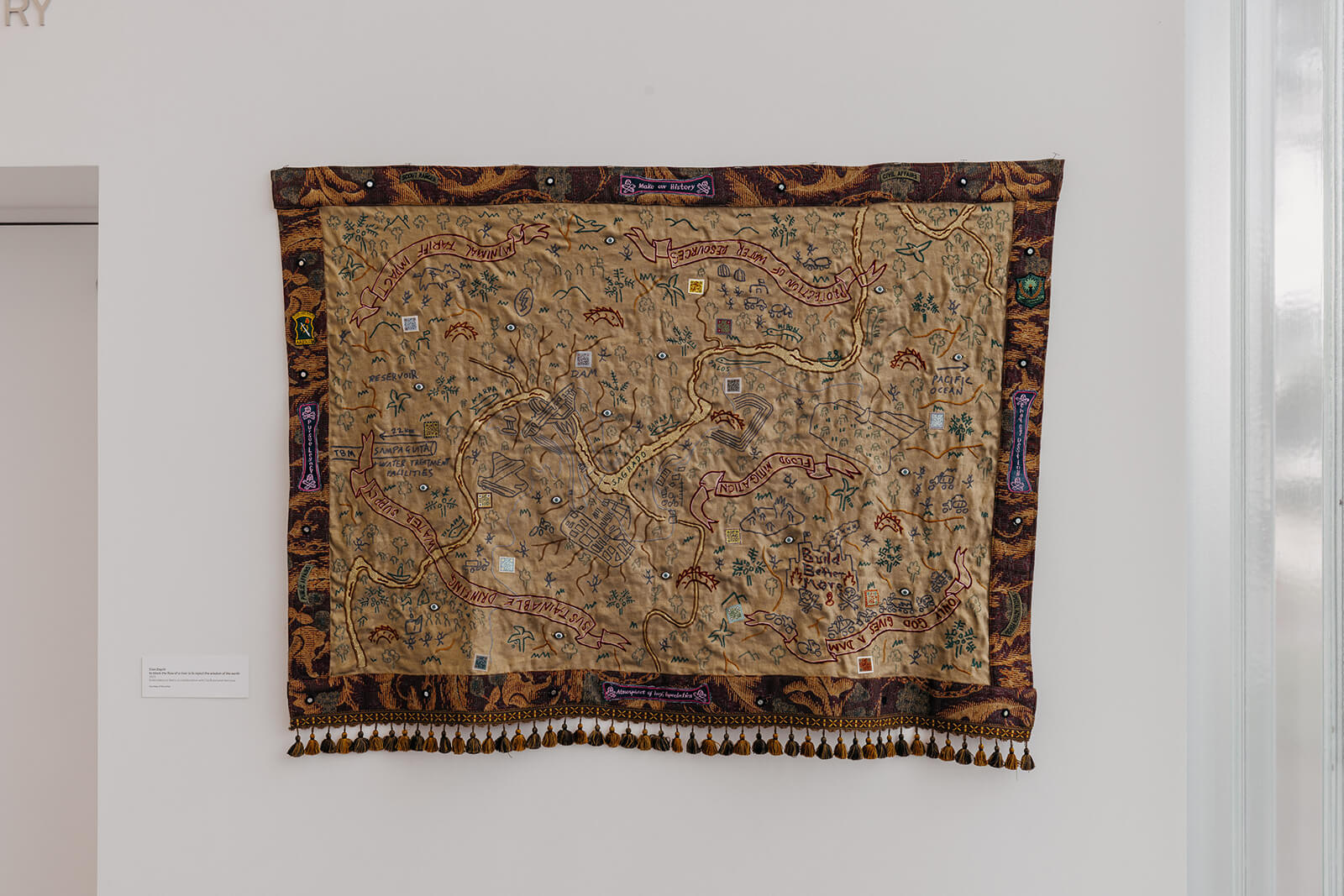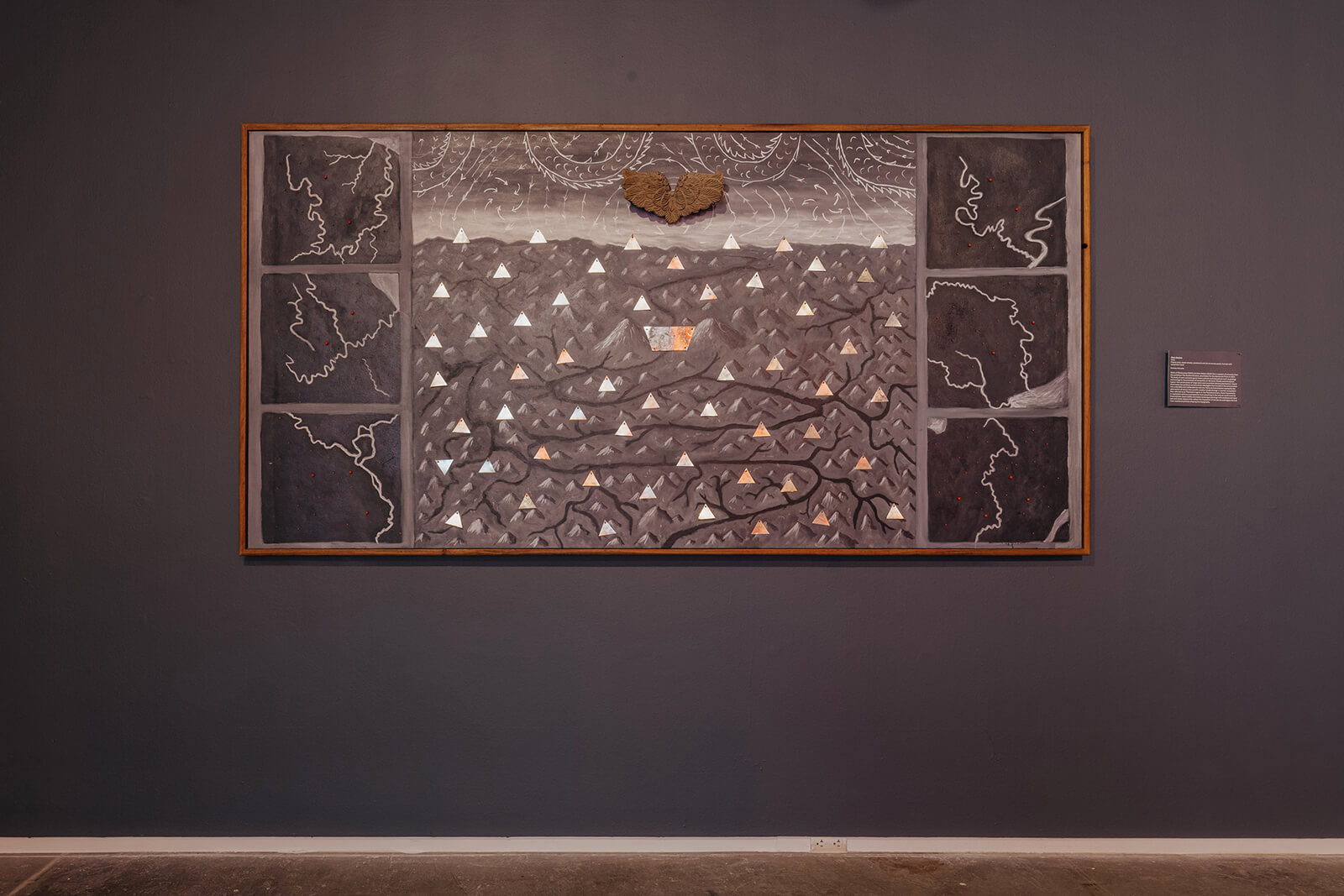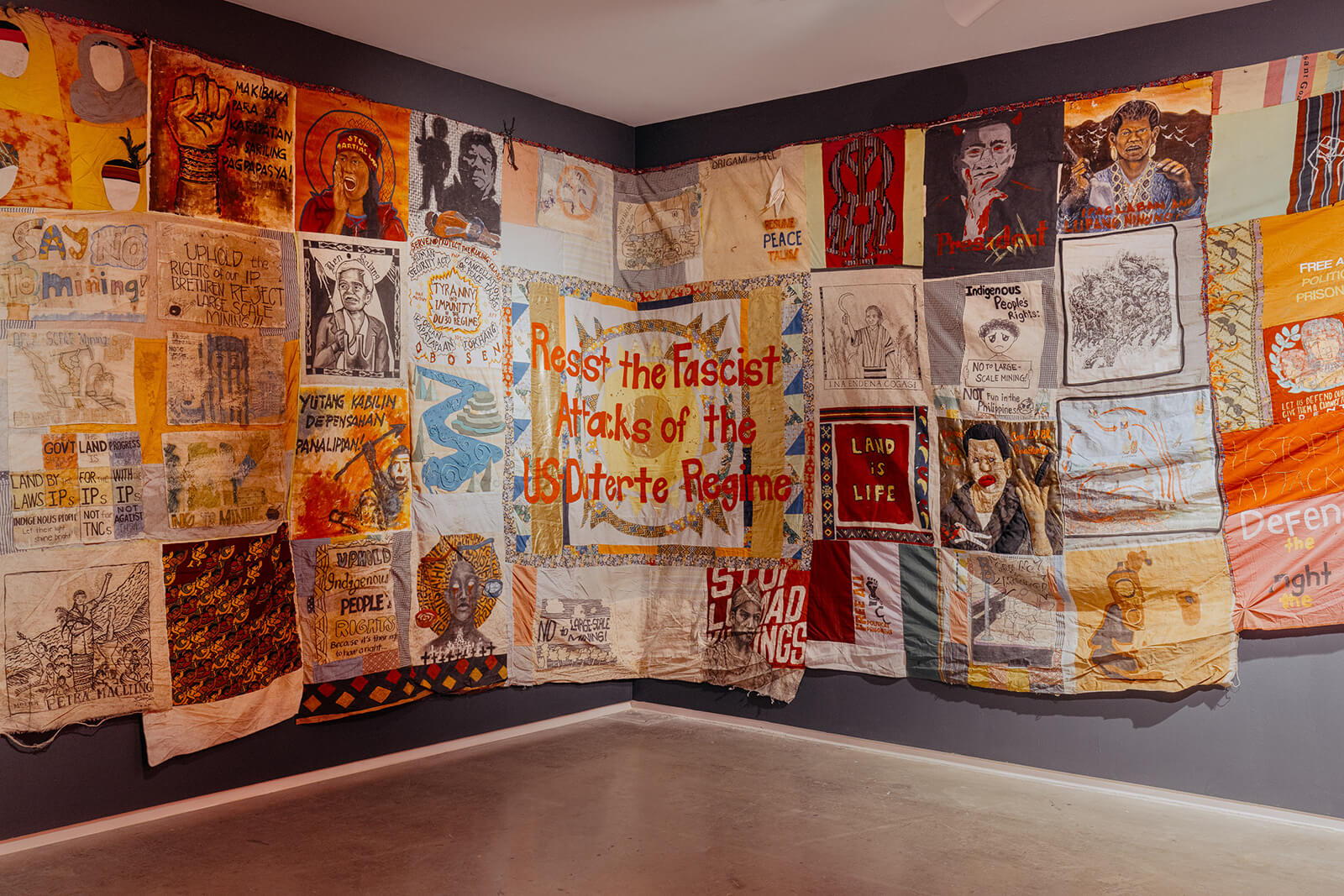A London exhibition reflects on shared South Asian histories and splintered maps
by Samta NadeemJun 19, 2025
•make your fridays matter with a well-read weekend
by Manu SharmaPublished on : Jul 28, 2024
The Blaffer Art Museum in Houston, Texas is currently presenting Cian Dayrit: Liberties Were Taken, the first solo museum exhibition of Filipino artist Cian Dayrit in the United States, running from May 31 - August 18, 2024. Dayrit is widely recognised for his cartographic artworks that explore colonialism, history and mythology. The exhibition brings together Dayrit’s works across painting, textile art and installation art and is organised by Erika Mei Chua Holum, the Cynthia Woods Mitchell Assistant Curator at the Blaffer Art Museum. Holum joins STIR for an interview that sheds light on Dayrit’s captivating counter-cartography.

Dayrit’s cartographic tapestries are intricately woven and painted and subvert the historical narratives that have come to define the lives of people from the Global South, especially Southeast Asia. Many of his works propound the need for native bodies of knowledge to be brought to the fore, superseding extractive, market-driven approaches to territorial planning. Dayrit’s art also speaks to themes of worker solidarity and class consciousness, with one particularly compelling work When the Land Beneath Our Feet Shakes (2021) proclaiming, “Agrarian revolution is justice!”

There is a sense of romanticism within Dayrit’s practice. His efforts are rarely confined to art-making. He regularly collaborates with various collectives, including Indigenous groups, in order to better understand their struggles and empower them with the creative tools necessary to create personal and communal cartographies mapping their lived histories. In particular, Dayrit conducted multiple map-making workshops with marginalised farmers in Manila in 2017 and 2019, where he encouraged participants to draw maps of their daily lives. Building upon their memories, Dayrit’s collaborators revealed spaces of dwelling, work, dispossession and aggression, the last of which they faced at the hands of government paramilitaries.

The use of textiles for map-making is part of a long tradition of weaving, embroidery, and fibre-based arts in liberatory artistic practices. – Erika Mei Chua Holum, the Cynthia Woods Mitchell Assistant Curator, Blaffer Art Museum
The works created by Dayrit’s collaborators also revealed trails that their families had walked for generations, now fenced off by multinational corporations, alongside rivers that had been essential to their agrarian way of life, whose waters had become polluted and unusable. In this manner, Dayrit’s practice has provided a creative impetus to present marginalised narratives that might otherwise have remained in the dark.

Holum discusses Dayrit’s focus on textile-based cartography, telling STIR, “The use of textiles for map-making is part of a long tradition of weaving, embroidery and fibre-based arts in liberatory artistic practices.” As she explains, the history of cartography is intertwined with colonialism and has been used extensively to impose territorial barriers on colonial subjects and aid in their administration. In her words, “…By bringing together counter-cartography, solidarity work and participatory engagement to the practice of map-making, the textiles can cross borders and become more accessible to the masses, along with the fugitive knowledge stitched into the works through text, symbols and icons.”
Blaffer’s presentation introduces visitors to a compelling practice that is uncommon within contemporary art. However, the greater value of this offering by the art museum lies in the native knowledge and experiences of practitioners from the Global South. Dayrit, then, is something of an infiltrator, trespassing across the barriers of regionality, class and language, bringing critical histories in tow that demand to be engaged with.
‘Cian Dayrit: Liberties Were Taken’ is being shown at The Blaffer Art Museum in Houston, Texas from May 31 - August 18, 2024.
by Shaunak Mahbubani Oct 13, 2025
Collective practices and live acts shine in across, with, nearby convened by Ravi Agarwal, Adania Shibli and Bergen School of Architecture.
by Srishti Ojha Oct 10, 2025
Directed by Shashanka ‘Bob’ Chaturvedi with creative direction by Swati Bhattacharya, the short film models intergenerational conversations on sexuality, contraception and consent.
by Asian Paints Oct 08, 2025
Forty Kolkata taxis became travelling archives as Asian Paints celebrates four decades of Sharad Shamman through colour, craft and cultural memory.
by Srishti Ojha Oct 08, 2025
The 11th edition of the international art fair celebrates the multiplicity and richness of the Asian art landscape.
 surprise me!
surprise me!
make your fridays matter
SUBSCRIBEEnter your details to sign in
Don’t have an account?
Sign upOr you can sign in with
a single account for all
STIR platforms
All your bookmarks will be available across all your devices.
Stay STIRred
Already have an account?
Sign inOr you can sign up with
Tap on things that interests you.
Select the Conversation Category you would like to watch
Please enter your details and click submit.
Enter the 6-digit code sent at
Verification link sent to check your inbox or spam folder to complete sign up process



by Manu Sharma | Published on : Jul 28, 2024
What do you think?